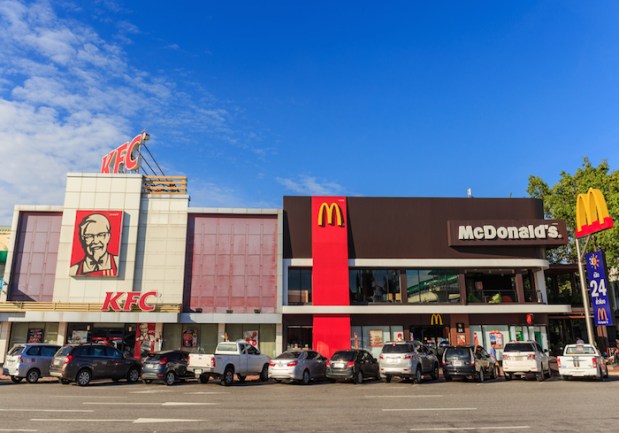Weirdness Is Currency In The Attention Economy

Playing with one’s food is all part of the Kentucky Fried Chicken (KFC) value proposition.
There was the Watt A Box that let customers charge their phone while eating dinner, the Gamers Box that came with a mount for the phone as well as controllers attached to the sides — and now, the KFO, short for Kentucky Flying Object.
Unlike a regular UFO, the KFO is completely identified: Using parts of the box, customers can disassemble and reassemble their fast food packaging to build a flying contraption that can then be piloted from their smartphone.
The KFO drone packaging was only available in India, only on select orders, and only on Jan. 25 and 26 — meaning that anyone who wanted one and didn’t get it will, at publication time, have missed their chance forever.
That seems to be the point of most of KFC’s bizarre fast food marketing ploys. They’re strange enough to grab eyes on social media newsfeeds, giving the brand viral attention. And the limited-edition nature of the offers encourages customers not to wait until cheat night or payday or whatever it is they’re waiting for — boxes like the KFO demand immediate action and tap into consumers’ sense of #FOMO (“fear of missing out”).
This generates spur-of-the-moment sales and adds value to the QSR’s core competency of serving great fried chicken that its customers love to eat. That’s exactly why KFC’s crazy marketing strategies actually aren’t crazy at all — more like genius.
The attention economy is a tough game to win (much tougher, we’ll wager, than any of the games in the Gamers box). “Weird” is a currency in this world. The media is all over whatever happens to be KFC’s latest wacky brainchild, and that’s exactly what the company wants.
Who else is getting weird-rich in the attention economy?
Look no further than Taco Bell, which, in 2017, paired up with apparel retailer Forever 21 to produce a taco-themed clothing line, and which now officiates weddings out of its Las Vegas flagship store (the package includes a Taco Bell garter, bow tie, sauce packet wedding bouquet, “Just Married” t-shirts, champagne flutes and a Cinnabon Delights wedding cake for $600).
Meanwhile, Burger King offers free Whoppers as a severance package to employees who have been fired and share about it on LinkedIn. The connection may be tenuous — fire-grilled burgers for fired employees — but when you’re down and out, you’ll take the consolation prize, perfect metaphor or not.
Burger King has also taken it upon itself to educate the American public about net neutrality in its latest commercial. In the ad, customers trying to order Whoppers are told that they must pay $26.99 to receive their burger faster, or pay less for a burger that will arrive much slower. Others are told that Burger King has decided it can make more money selling chicken sandwiches, so it’s slowing down access to Whoppers.
Although the Federal Communications Commission (FCC) has already made the decision to repeal net neutrality, the public could demand a reversal — and it’s a fair bet to say that, thanks to this educational burger experience, these hungry customers may put up a stink about it.
Then there was the epic Wendy’s Twitter account and Denny’s Tumblr, which capitalized on meme culture and internet sass. And KFC itself was quick to jump on the latest big trend with its Canadian “Bitcoin Bucket,” which was only available to customers paying with the popular cryptocurrency.
While any attention is good attention in the attention economy, it’s probably better branding to be known as the company that came up with the KFO, Colonel Sanders Faraday cage, chicken-flavored nail polish, extra-crispy sunscreen and a deep-fried bath bomb — weird, but funny — than, say, the brand that makes household products that teenagers apparently can’t distinguish from candy or something — weird, and deadly.
The moral of the story? Weird sells, but brands are better off manufacturing their own than waiting for it to come their way by chance.
